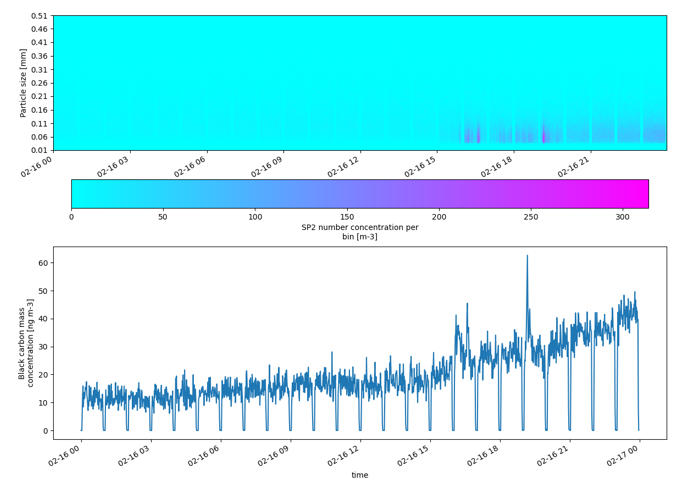Black Carbon Data Product Available for Use
Published: 24 January 2024

The Atmospheric Radiation Measurement (ARM) user facility developed a data product for scientists to measure the black carbon (BC) mass loadings in the atmosphere over multiple sites.
BC mass concentration and derived size distribution data are now available as a b1-level product for ARM’s North Slope of Alaska (NSA) atmospheric observatory from January to October 2020. In addition, b1-level data are available from the following three ARM mobile deployments:
- the 2019–2020 Multidisciplinary Drifting Observatory for the Study of Arctic Climate (MOSAiC) expedition in the central Arctic
- the 2021–2022 TRacking Aerosol Convection interactions ExpeRiment (TRACER) near Houston, Texas
- the 2021–2023 Surface Atmosphere Integrated Field Laboratory (SAIL) campaign near Crested Butte, Colorado.
BC is the primary light-absorbing aerosol in the atmosphere and is second only to carbon dioxide as a positive forcing agent. Its presence in the high latitudes can potentially contribute to warming temperatures and, when deposited on the ground, lead to accelerated sea ice melt. These data are critical to quantifying aerosol direct effects in the Arctic. Meanwhile, BC is a common industrial pollutant that affects air quality at non-Arctic sites.
Data were obtained from deployments of the single-particle soot photometer (SP2), which measures the BC mass of individual particles. The SP2 is part of ARM’s Aerosol Observing System (AOS).
Calibration coefficients designed for each observatory/deployment were applied to the raw signals in the a1-level data to produce the b1-level mass and size distributions.
The NSA and MOSAiC data are in evaluation mode, while the TRACER and SAIL data are in production. Please note: Previously released NSA and MOSAiC c1-level data were reassigned to b1 level with no changes to the data during reassignment.
All data are in netCDF format at a 60-second temporal resolution. They are available under the product name AOSSP2BC60S in the ARM Data Center. (To download the data, first create an account.)
Before using any of the data, please contact Arthur Sedlacek or Robert Jackson to ensure proper usage.
To cite the data, please use doi:10.5439/1807910.
Keep up with the Atmospheric Observer
Updates on ARM news, events, and opportunities delivered to your inbox
ARM User Profile
ARM welcomes users from all institutions and nations. A free ARM user account is needed to access ARM data.


















